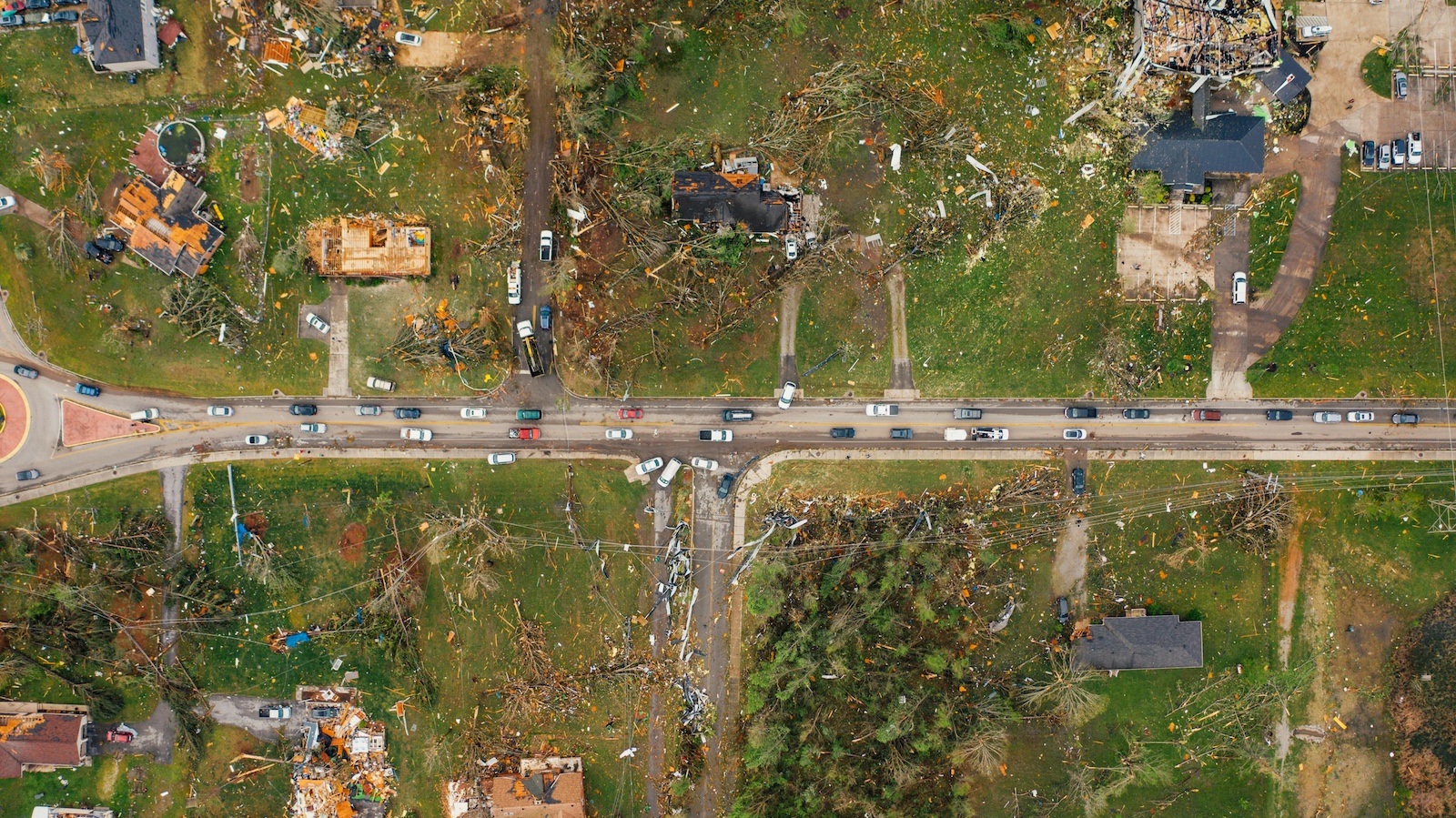Our study on Charleston County, SC, assesses the cost impacts of flood insurance if premiums were increased to risk‐based prices. We then consider a program that addresses affordability concerns coupled with cost‐effective risk reduction measures.
We follow these two principles for flood insurance:
- Flood insurance premiums should be priced to accurately reflect risk. Premiums reflecting risk inform individuals as to the hazardousness of the area and encourage investment in cost‐effective adaptation measures.
- Issues of affordability should be addressed, but not by subsidizing insurance premiums. Many low‐ and middle‐income homeowners living in older homes in flood‐prone areas are not able to afford flood insurance if premiums are priced to reflect risk.
We determined risk‐based premiums for a subset of National Flood Insurance Program (NFIP) policyholders who live in Charleston County’s inland and coastal Special Flood Hazard Areas (SFHAs) who currently receive NFIP premium discounts despite their location in high-risk areas. If premiums were risk‐based, these homeowners in Charleston County’s FEMA‐mapped high‐risk flood zones that currently receive subsidies would see their costs increase substantially.
If premiums were risk‐based, they would increase from their current levels by 108% on average for policies in the high‐risk 100‐year floodplain (A zone) and by 159% on average in the high-risk 100‐year coastal floodplain (V zone).
Elevating a house by a few feet can decrease the risk‐based premium by 70% to 80%, saving thousands of dollars annually. However, elevating a house is very expensive. We propose a voucher program that has two key aspects: (1) insurance premiums are based on risk; (2) vouchers are used to offset both the premium and the cost of the loan for risk mitigation.
Implementation of the voucher program with mitigation can reduce government expenditures by more than half over a program that does not require mitigation if the cost of elevating a house is around $25,000 in the A zone. In the high-hazard coastal V zone, cost savings can be achieved even when the cost of elevation is as high as $75,000. Mitigation does not lead to reduction in the cost of the voucher if the policyholder’s household income is below $10,000.
Elevation is not feasible for all homes, notably those in historic districts. Other actions could also be considered, such as making a higher deductible the standard option. Other mitigation measures might also lead to lower NFIP premiums, such as wet flood‐proofing the ground floor or moving all habitable areas to the second floor in multi‐story homes.
Premiums reflecting risk in the NFIP are primarily a function of the designated flood zone, coverage limits and the property’s structural features such as the height of the lowest floor relative to the base flood elevation (BFE). The BFE is the estimated height of floodwaters during a 100‐year flood.
Charleston County is vulnerable to both inland and hurricane flood risks so there are incentives for many homeowners to take steps to invest in cost‐effective measures to reduce their risk and hence their risk‐based insurance premiums.
To elevate the home, the homeowner would take a 20‐year, 3% interest loan. A voucher would offset both the reduced risk‐based premium and the cost of the loan to elevate the house. We assume that a household earning $50,000 gross income per year can contribute 5% ($2,500) to flood insurance. After the policyholder’s $2,500 contribution, the voucher covers the additional costs.
To illustrate, consider a family living in the A zone with a house one foot below BFE where the risk‐based premium is $5,596. As shown in Table 1, at low and medium elevation costs, the annual cost (loan payment plus the flood insurance premium) is less than the voucher would have been had the homeowner not elevated the house. In fact,
if mitigation were required, no federal expenditure would be incurred when elevation costs are low, because the loan cost and the risk‐based premium would be less than $2,500. Savings generated from risk mitigation are even greater in the V zone; even when elevation costs are high, the reduction in premium justifies the investment, as shown in Table 2.
Table 1: Voucher Costs in the A Zone without and with Elevation (U.S. Dollars)
| Insurance voucher – no mitigation |
| Risk‐based premium without elevation |
5,596 |
| Homeowner pays 5% of gross income |
2,500 |
| Government voucher |
3,096 |
|
| Insurance voucher -- after house elevation |
Low cost |
Medium cost |
High cost |
| Cost to elevate the house 2 feet |
24,635 |
50,970 |
74,756 |
| Risk‐based premium after elevation |
839 |
839 |
839 |
| Annual loan payment (3% interest, 20 years) |
1,656 |
3,426 |
5,025 |
| Total annual cost |
2,495 |
4,265 |
5,864 |
| Homeowner pays |
2,495 |
2,500 |
2,500 |
| Government voucher |
-- |
1,765 |
3,364 |
Table 2: Voucher Costs in the V Zone without and with Elevation (U.S. Dollars)
| Insurance voucher – no mitigation |
| Risk‐based premium without elevation |
19,218 |
| Homeowner pays 5% of gross income |
2,500 |
| Government voucher |
16,718 |
|
| Insurance voucher -- after house elevation |
Low cost |
Medium cost |
High cost |
| Cost to elevate the house 2 feet |
24,635 |
50,970 |
74,756 |
| Risk‐based premium after elevation |
5,304 |
5,304 |
5,304 |
| Annual loan payment (3% interest, 20 years) |
1,656 |
3,426 |
5,025 |
| Total annual cost |
6,960 |
8,730 |
10,329 |
| Homeowner pays |
2,500 |
2,500 |
2,500 |
| Government voucher |
4,460 |
6,230 |
7,829 |
When a family’s income is below $50,000, the homeowners’ proposed contribution would be less than $2,500 and the government’s contribution would therefore increase from the above examples. In both A and V zones, we find that when annual household income is below $10,000 it is cost‐effective for the government to offer a voucher without requiring the house to be elevated. For households in the $10,000–20,000 income bracket, elevation is cost‐effective for the government only when elevation cost is low. In the V zone, for incomes of more than $20,000, a voucher with a mitigation loan is always financially preferable even when the elevation cost is high.
State‐Level Natural Disaster Programs in South Carolina
South Carolina currently has several natural disaster programs and tax incentives to assist homeowners in purchasing insurance and fortifying homes.
- South Carolina’s Omnibus Coastal Insurance Act of 2007 created the Safe Home grants program for low‐and middle‐income homeowners to retrofit primary residences against high‐wind and hurricane damages. Families making less than 80% of the county median household income and with home value below $150,000 qualify to receive as much as $5,000 in non‐matching grants. Families with income above that threshold and home value less than $300,000 are eligible for as much as a $5,000 matching grant. From 2008 to 2011, the Safe Home program awarded 2,500 grants totaling $12.1 million.
- The Residential Retrofit Tax Credit provides state income tax credits of as much as $1,000 for expenses incurred when retrofitting a home against natural disasters. From 2008 to 2011, 670 Residential Retrofit Credits have been claimed, totaling $781,106.
- The South Carolina Excess Insurance Premium Tax Credit allows homeowner to claim as much as $1,250 in state income tax credit against excess premium paid on property and casualty insurances. Excess premium is defined as the portion of the premium greater than 5% of the taxpayer’s annual gross income. Additionally, the state offers Catastrophe Saving Accounts, which are interest‐bearing accounts not subject to state income taxes if funds are used for qualified catastrophe expenses.
/ul>








